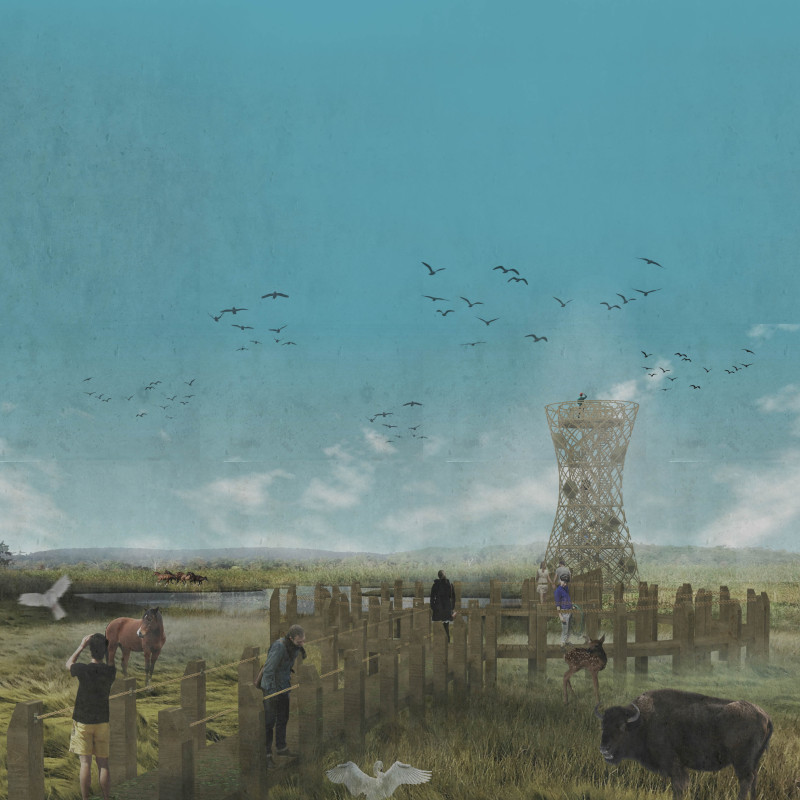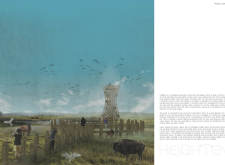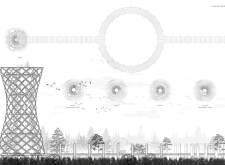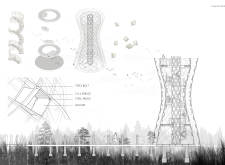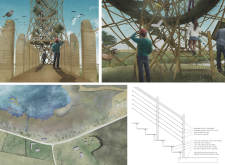5 key facts about this project
## Project Overview
The observation tower at Pape Lake is designed to enhance the visitor experience while fostering an appreciation for the surrounding ecological environment. Standing approximately 50 meters tall with a 50-meter entrance walkway, the structure provides a gateway to the ecological landscape, allowing users to engage with the lagoon and its biodiversity. The design aims to create a contextual observation space that facilitates reflection and interaction with nature.
## Spatial Configuration and Experience
The tower features two panoramic observation decks positioned at varying heights, which offer distinct perspectives of the ecological surroundings without compromising the natural environment. The notched and spiraled form of the structure draws inspiration from natural growth patterns, thus creating a symbolic link between built form and ecosystem. This design approach also supports intuitive circulation, with spiral pathways guiding visitors through the observation levels and encouraging exploration.
## Material Selection and Sustainability
Materials selected for the tower emphasize both aesthetic and functional performance while promoting sustainability. Glued laminated timber (glulam) is utilized for its strength and lightweight characteristics, providing the primary structural framework. In addition, elements such as spruce lumber, steel angles, and rope systems are incorporated to enhance stability and durability. The use of wood contributes to a tactile connection with nature, while steel elements introduce modernity, together supporting the project's goal of harmonizing architecture with its ecological context.


